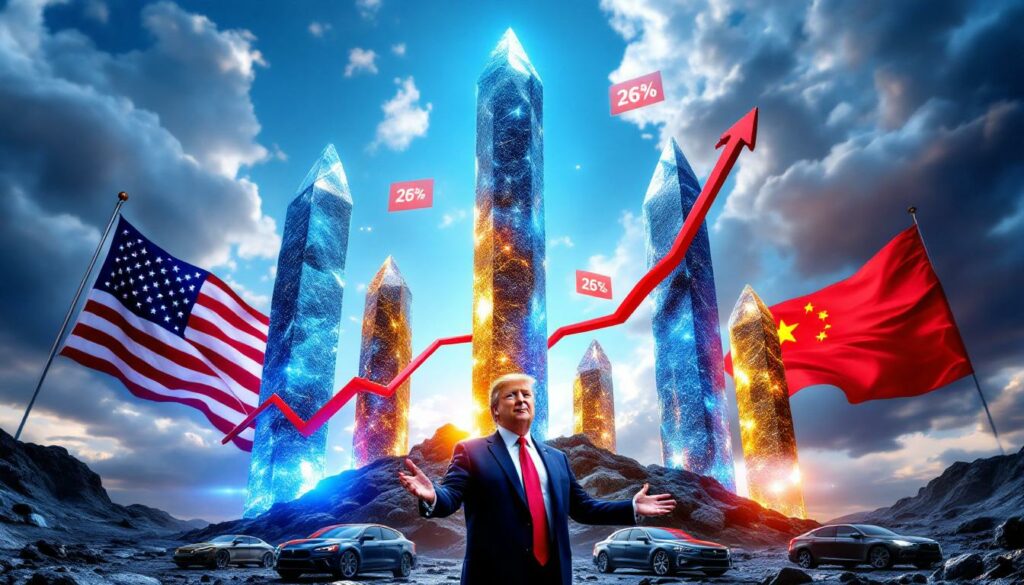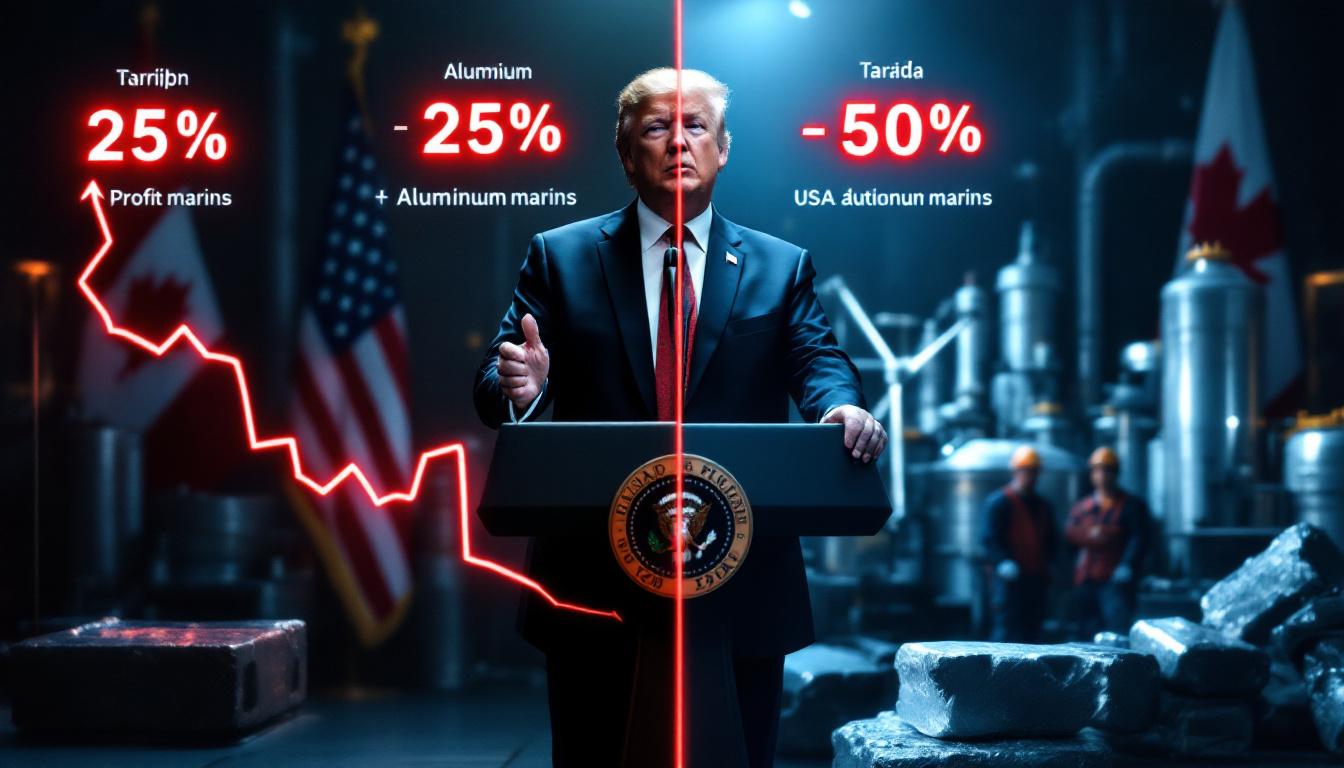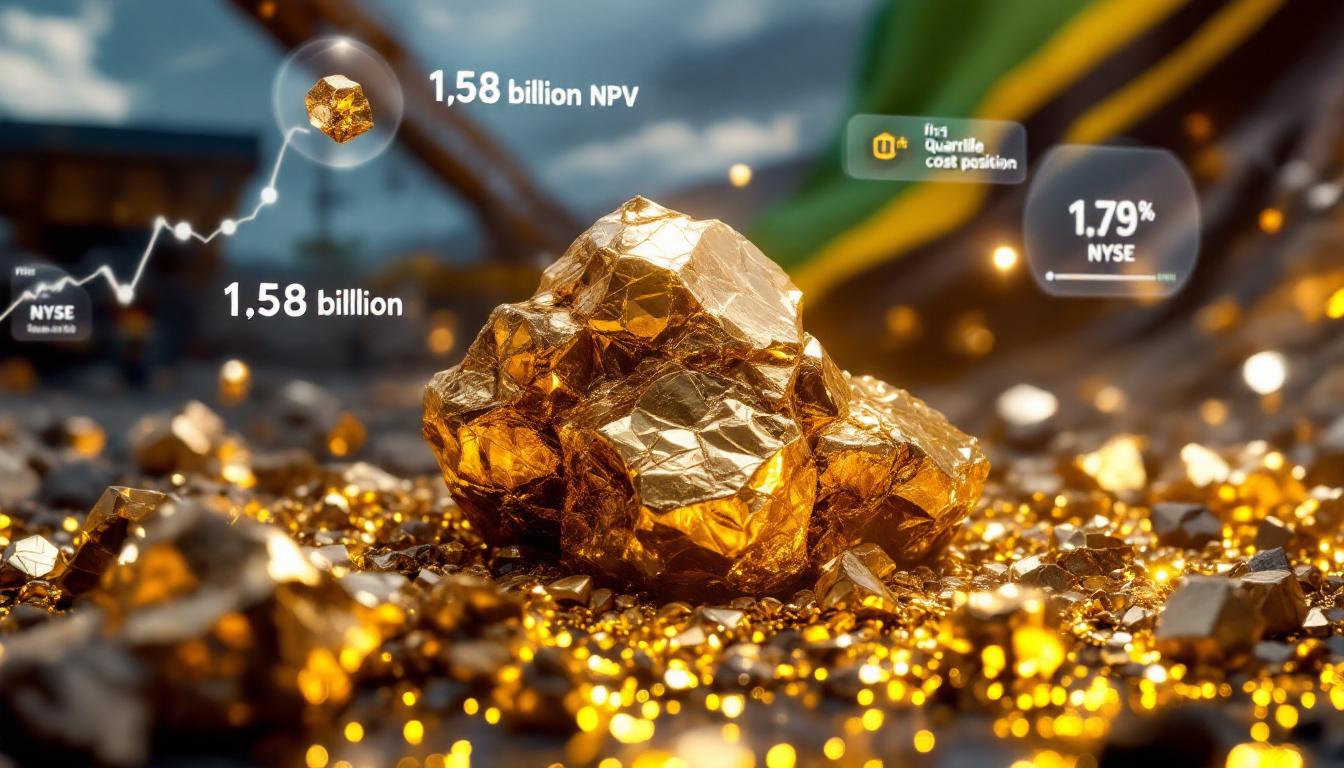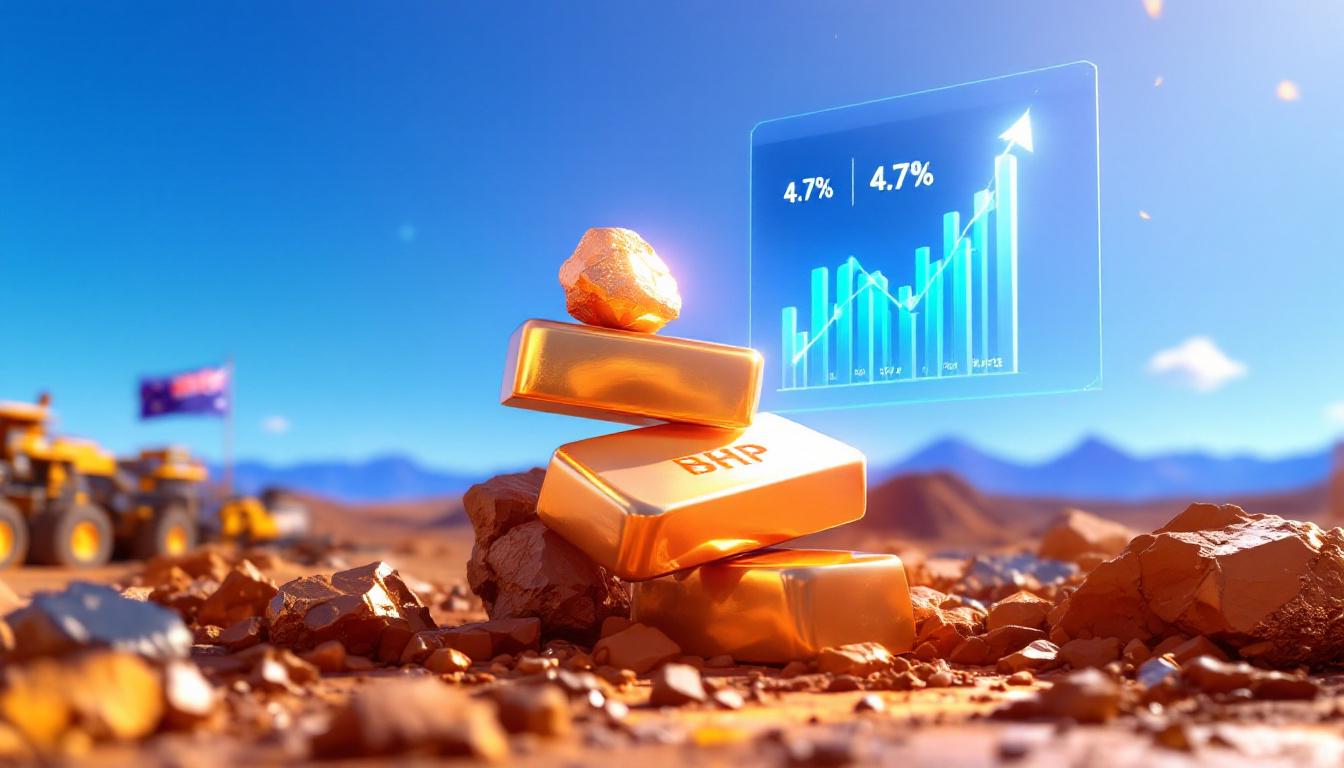Understanding the Dramatic 26% Share Price Jump
Syrah Resources (ASX: SYR) experienced a remarkable 26% share price surge on July 18, 2025, with shares climbing from $0.29 to $0.365. This extraordinary performance significantly outpaced the broader ASX 200 Index, which rose just 1.3% on the same day. The dramatic price movement came in response to major policy developments announced by the U.S. Commerce Department just one day earlier.
The sudden spike represents a significant shift in investor sentiment toward Syrah, particularly noteworthy given the company's recent operational challenges. This reversal highlights how quickly geopolitical trade decisions can impact resource companies positioned in strategic supply chains.
"The market's enthusiastic response reflects a dramatic reassessment of Syrah's position in the global graphite supply chain virtually overnight," noted market analysts watching the battery materials sector.
What Triggered Syrah Resources' Share Price Rally?
U.S. Announces Massive Tariffs on Chinese Graphite
The catalyst for Syrah's share price jump on Trump tariff news was the U.S. Commerce Department's announcement on July 17, 2025, revealing plans to impose a substantial 93.5% tariff on Chinese graphite imports. When combined with existing duties, Chinese graphite exporters could face total tariffs of approximately 160% – effectively pricing many Chinese suppliers out of the U.S. market.
The U.S. government justified these aggressive measures by accusing China of "dumping" graphite at artificially low prices to dominate the market. According to the Commerce Department's findings, this practice has allowed Chinese producers to undercut competitors and establish market dominance at the expense of supply chain security for critical battery materials.
As reported by CNN and Mining.com, these tariffs represent one of the most significant trade actions taken against Chinese battery materials suppliers and signal a potential broader shift in U.S. trade policy regarding critical minerals and battery components.
Why Graphite Matters for Modern Technology
Graphite has emerged as a critical component in modern technology, particularly as the world transitions toward electric vehicles and renewable energy storage systems. Its unique properties make it essential for lithium-ion battery production, where it serves as the primary material for battery anodes.
The material's high electrical conductivity, thermal stability, and relatively low cost have made it irreplaceable in current battery technology. As electric vehicle production scales globally, secure access to battery-grade graphite has become a strategic priority for manufacturers and governments alike.
According to the U.S. Geological Survey, China currently supplies over 40% of U.S. graphite imports, creating a significant dependency that the new tariffs aim to address. This reliance on Chinese graphite has raised concerns about supply chain resilience, particularly as demand for EV supply chain shift continues to grow.
How Is Syrah Resources Positioned to Benefit?
Syrah's Strategic Market Position
Syrah Resources occupies a unique position in the global graphite supply chain that makes it particularly well-situated to capitalize on the new tariff environment. The company operates the Balama graphite mine in Mozambique, a world-class asset with an estimated 50-year production capacity and some of the highest-grade graphite deposits globally.
More critically, Syrah maintains a downstream processing facility in Vidalia, Louisiana, where it produces active anode material for battery manufacturers. This vertical integration from mine to battery-ready material represents a significant competitive advantage in a market where secure, non-Chinese supply chains are increasingly valued.
The company proudly positions itself as the only vertically integrated natural graphite and anode material producer outside China – a claim that takes on substantially more significance in light of the new tariff structure.
Potential Market Opportunities
With Chinese graphite effectively priced out of the U.S. market, American manufacturers are likely to seek alternative suppliers – creating a substantial opportunity for Syrah Resources. The company's established U.S. processing facility offers significant logistical advantages for domestic battery producers seeking to avoid supply disruptions.
Battery and electric vehicle manufacturers place increasing value on supply chain security and regional production capabilities. Syrah's vertical integration from mining to processing allows it to offer customers greater transparency and reliability throughout the supply chain – attributes that command premium pricing in today's market.
Industry analysts anticipate Syrah may soon announce new supply agreements with U.S.-based battery producers seeking to secure graphite supplies unaffected by the new tariffs and investment. Such agreements would provide further revenue stability and potentially improve the company's bargaining position with customers.
What Risks Should Investors Consider?
Recent Operational Challenges
Despite the positive market reaction, investors should remain mindful of Syrah's recent operational difficulties. The company declared force majeure in late 2024 following civil unrest in Mozambique related to contested elections, which forced a complete halt of production at the Balama mine.
This production stoppage had severe financial consequences, leading Syrah to default on U.S. government-backed loans that had supported its Louisiana processing facility. The company only resumed graphite production at Balama in June 2025 – just one month before the tariff announcement.
These recent disruptions highlight the inherent geopolitical risks associated with mining operations in regions with political instability. Investors should carefully evaluate whether similar disruptions could occur in the future and how they might impact Syrah's ability to capitalize on the new market opportunity.
Broader Investment Considerations
Beyond the recent operational challenges, mining investments inherently carry numerous risks that require careful consideration. Commodity price volatility can significantly impact profitability, particularly if the market becomes oversupplied as other non-Chinese producers ramp up production in response to the same tariffs benefiting Syrah.
Competition from other graphite producers may intensify as they also seek to capitalize on the changed market dynamics. Companies with operations in politically stable regions may ultimately prove more reliable suppliers despite Syrah's first-mover advantage.
Long-term investors should also consider the technological risks associated with battery materials. While graphite remains essential to current lithium-ion battery technology, ongoing research into silicon anodes and solid-state batteries could eventually reduce demand for natural graphite in certain applications.
How Does This Fit Into the Broader Market Context?
Electric Vehicle Supply Chain Dynamics
The tariffs on Chinese graphite reflect a growing emphasis on securing battery materials from politically stable sources – a trend accelerated by increasing government intervention in critical minerals energy security globally. Many Western nations have classified battery materials as strategically important, leading to policy support for domestic production and processing.
This shift has accelerated the trend toward regionalization of battery production ecosystems, with manufacturers increasingly looking to source materials from nearby suppliers rather than relying on extended global supply chains vulnerable to disruption.
The rising importance of vertical integration in battery material supply has become evident as manufacturers seek to secure consistent access to materials with specific performance characteristics. Companies like Syrah that control multiple stages of production can offer greater quality assurance and supply reliability – attributes increasingly valued in the EV supply chain.
Global Trade Policy Implications
The graphite tariffs signal potential broader shifts in US-China trade impact, particularly regarding materials deemed critical to energy transition technologies. These actions may trigger reciprocal measures from China affecting other commodities, potentially creating further market disruptions across various supply chains.
Such trade tensions could accelerate Western investments in alternative supply sources for various battery materials beyond graphite, including lithium, cobalt, and nickel. Companies with established production capabilities outside China stand to benefit from this diversification effort.
The tariff decision demonstrates the strategic importance of battery materials in international relations, elevating what were once obscure industrial minerals to matters of national security interest. This politicization of supply chains creates both opportunities and risks for companies like Syrah operating in this increasingly complex environment.
What's Next for Syrah Resources?
Key Factors to Watch
Several factors will determine whether Syrah can translate this favorable policy environment into sustainable business success. The sustainability of production at the Balama mine remains paramount – consistent output will be essential to meeting potential new customer demands.
Investors should closely monitor announcements of new customer agreements resulting from the changed market dynamics. Long-term offtake agreements with battery producers or automakers would provide revenue stability and validate the company's market position.
Potential expansion of U.S. processing capacity could significantly enhance Syrah's value proposition. The company may leverage the improved market conditions to increase its active anode material production capabilities, moving further downstream in the battery supply chain.
The company's ability to capitalize on the favorable policy environment will ultimately determine whether the recent share price gains can be sustained. This includes successfully navigating any loan restructuring necessitated by the previous defaults while maintaining operational excellence.
Potential Challenges Ahead
Despite the positive outlook, Syrah faces several significant challenges. Maintaining production consistency after the recent disruptions in Mozambique will be critical to rebuilding customer confidence. Any further operational interruptions could severely damage the company's reputation as a reliable supplier.
Meeting the stringent quality standards required by battery manufacturers presents another hurdle. Battery-grade graphite must meet precise specifications for purity, particle size, and performance characteristics – achieving these consistently at scale requires sophisticated processing capabilities.
Managing operational costs in an increasingly competitive market environment will be essential for maintaining profitability. As other producers enter the market attracted by the same tariff protections, price competition may intensify, potentially squeezing margins.
Navigating ongoing geopolitical uncertainties, both in Mozambique and in the broader international trade landscape, remains perhaps the most significant challenge. Policy changes or political developments could quickly alter the favorable conditions currently supporting the company's prospects.
FAQ: Syrah Resources and the Graphite Market
What exactly does Syrah Resources produce?
Syrah produces natural graphite from its Balama mine in Mozambique and processes it into active anode material at its facility in Louisiana, USA, for use in lithium-ion batteries. The company handles multiple stages of the supply chain, from extraction of raw graphite ore to processing it into battery-ready material that meets the specifications required by battery manufacturers.
How significant is the U.S. tariff on Chinese graphite?
The 93.5% tariff, potentially reaching 160% when combined with other duties, represents one of the most aggressive trade actions taken against Chinese battery materials. This level of tariff effectively prices Chinese suppliers out of the U.S. market, fundamentally reshaping global graphite supply chains and creating significant opportunities for non-Chinese producers like Syrah.
Why did Syrah's shares jump so dramatically?
The market anticipates Syrah will benefit substantially from US tariffs impact industries seeking non-Chinese graphite sources, potentially leading to new supply agreements and improved pricing power. As one of the few established non-Chinese graphite producers with U.S. processing capabilities, Syrah is uniquely positioned to capture market share previously held by Chinese suppliers.
What are the main risks for Syrah Resources?
Key risks include potential political instability in Mozambique, operational challenges at the Balama mine, competition from other graphite producers, and the company's ability to meet increased demand following recent production disruptions. The company's previous default on government-backed loans also presents financial challenges that will need to be addressed as it attempts to capitalize on the new market opportunity.
Want to Discover the Next Major Mining Opportunity?
Stay ahead of the market with Discovery Alert's proprietary Discovery IQ model, which instantly notifies investors of significant ASX mineral discoveries like the ones that transformed De Grey Mining and WA1 Resources. Explore our dedicated discoveries page to understand how early identification of major mineral discoveries can lead to exceptional investment returns.




